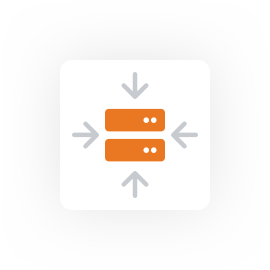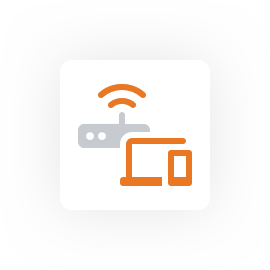Our comprehensive penetration testing service is precisely designed to identify your IT infrastructure’s potential security flaws before they’re discovered by malicious actors

Uncovering real risks
Penetration testing exploits identified vulnerabilities, showing what a hacker might do in real situations. Such actions might include accessing confidential information and executing commands within the operating system. But testing might also tell you that a vulnerability that is theoretically high risk isn’t that risky at all because of the difficulty of exploitation.
Testing your cyber-defense capability
You should be able to detect attacks and respond adequately and on time. Once you detect an intrusion, you should start investigations, discover the intruders and block them. Whether they are malicious, or experts testing the effectiveness of your protection strategy. The feedback from the test will tell you if – but more likely what – actions can be taken to improve your defense.
Maintaining trust
A cyber assault or data breach negatively affects the confidence and loyalty of your customers, suppliers and partners. However, if your company is known for its strict and systematic security reviews and penetration tests, you will reassure all your stakeholders.
Penetration Testing is a 5-step process that reveals critical insights into your IT infrastructure, processes, and people. Our experts utilize common hacker tactics to locate flaws in your network security systems. A simulated attack is launched against each identified vulnerability, allowing us to determine if a malicious actor could gain access to your network. Once completed, a final report outlining our findings and recommended remediation is provided.
STEP 1
This is the most time consuming stage which involves planning to simulate a malicious attack – the attack is designed in a way that helps to gather as much information on the system as possible. In this step ethical hackers inspect the system, note the vulnerabilities, and how the organization’s tech stack reacts to system breaches like including social engineering, dumpster diving, network scanning, and domain registration information retrieval.
STEP 2
Based on the findings of the planning step, penetration testers use scanning tools to explore the system and network weaknesses. This step identifies the system weaknesses that are potentially exploited for targeted attacks. It is essential to obtain all this information correctly, as it will define the success of the following steps.
STEP 3
Having understood the system’s vulnerabilities, pen testers then infiltrate the infrastructure by exploiting security weaknesses. Next, they attempt to exploit the system further by escalating privileges to demonstrate how deep into the target environments they can go.
STEP 4
This step identifies the potential impact of a vulnerability exploit by leveraging access privileges. Once they have a foothold in a system, penetration testers should maintain access and hold the simulated attack long enough to accomplish and replicate malicious hackers’ goals.
STEP 5
This is the result of a penetration test. As part of the last stage, the security team prepares a detailed report describing the entire penetration testing process and play book used.

A security assessment of your organization’s perimeter systems. Your perimeter is comprised of every system that is directly reachable from the internet.

A thorough assessment of your organization’s network to determine the type and degree of damage a potential attacker including an insider could cause.

Identification and examination of the connections established between your organization’s wireless devices and Wi-Fi access point.

The process of using penetration testing techniques on your organization’s web application API to determine its exploitability.

Our proven methodology, developed over thousands of successful tests, provides comprehensive results and proven mitigation strategies.

Leveraging our certified Penetration Testers and modern ethical hacking approach allows you to vet your cyber security posture for your customers and stakeholders

Access your detailed Penetration Testing reports from our customized insight portal at any time, making it simple to review and analyze key data points.
If you are interested in pursuing penetration testing, please download our scope document, fill out, and give us a call.
Penetration testing helps you find and fix security vulnerabilities before attackers can exploit them. It serves as a “fire-drill” to examine whether your security implementations are genuinely effective. By simulating real-world cyberattacks, it strengthens your defenses, protects your sensitive data, ensures compliance with regulations, and shows your commitment to security—building trust with your clients and partners. After testing, we provide detailed insights into how we breached your network, educating your staff on what to look for and how to intercept intruders in the future.
Our manual penetration tests are conducted by certified ethical hackers who simulate real-world attacks to deliver accurate, actionable results. Automated tests often generate numerous false positives, costing you time and money as you chase down non-existent vulnerabilities. Additionally, automated tools can disrupt your network with uncontrolled scans, potentially causing downtime.
The results of an automated test can end up as a sunk cost, as you’ll still need a manual test for true insights and insurance compliance. Our certified experts conduct “quiet” tests that prioritize stealth and target accuracy, just like real-world attackers. With our approach, you’ll receive precise findings and clear remediation steps, ensuring your actual risks are effectively addressed.
While automated “Fisher Price” tests might seem cost-effective, they often lead to more work down the line because you’ll need a proper test to get valid results. They may disrupt your network and aren’t usually accepted by insurance companies for coverage. Investing in D2’s manual testing saves you time and resources in the long run by uncovering hidden vulnerabilities and strengthening your overall security posture.
There are several types of penetration tests to help find and fix vulnerabilities:
Penetration testing typically takes about 2–4 weeks, depending on the size of your network. After that, we spend an additional 1–2 weeks compiling a detailed report with executive overview, our findings and recommendations.
Vulnerability scanning uses automated tools to detect vulnerabilities in your network. During this process, the vulnerabilities are only detected, not exploited to gain access/control.
Penetration testing is a manual process that involves exploiting vulnerabilities, emulating what a hacker might attempt in an effort to access and take control of your network.
You’ll get a detailed report with our findings, including an executive summary and actionable recommendations to address any vulnerabilities. In case of a successful breach, we will provide a detailed playbook which you can use to detect and prevent future attacks.
Our pricing varies based on the scope of the pen test. Please contact us for a detailed quote based on your specific needs.
Getting started is easy! You can:
Take the first step toward protecting your organization’s private information by contacting us today.
© 2025 D2 Cybersecurity All rights reserved Privacy Policy